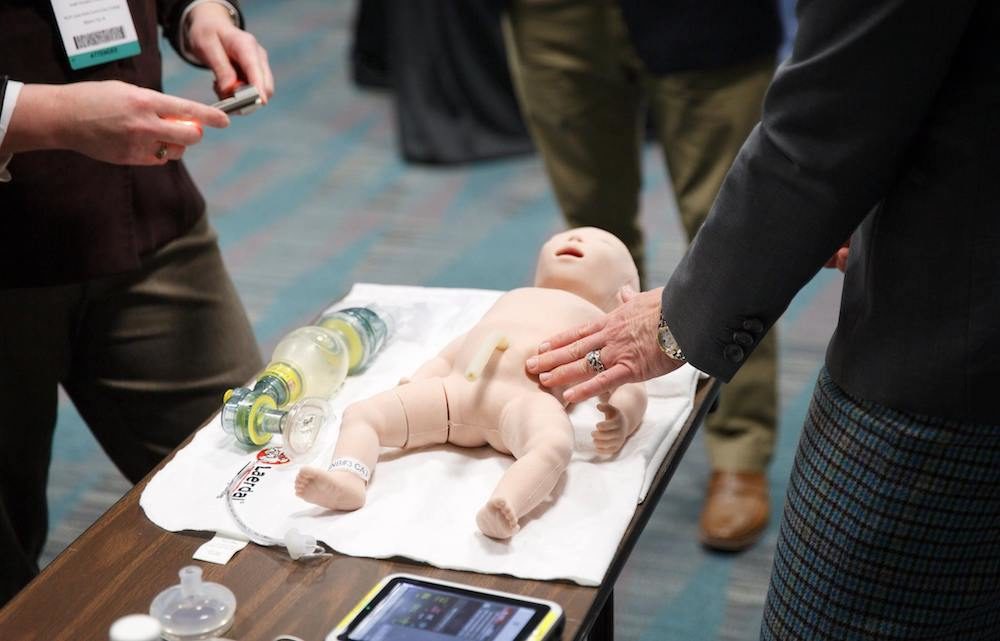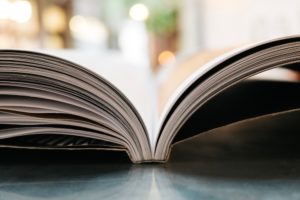SimBaby
SimBaby is a pediatric simulator representing a 9-month-old manufactured by Laerdal Medical to help improve pediatric critical care through healthcare simulation. The goal of the Sim Baby medical simulation product is to assist learners in receiving advanced training in all aspects of pediatric care. The new Laerdal SimBaby is a tether-less manikin which gives learners the ability to practice recognizing and responding to critically ill pediatric patients. Laerdal designed the SimBaby as a highly realistic high-fidelity patient simulator that meets specific learning objectives focusing on initial assessment and treatment.
SimBaby is a useful educational training system healthcare providers can use to simulate team-centered, safe, highly-realistic infant care in clinical environments. Utilization of high fidelity patient manikins like the SimBaby in healthcare simulation based education prepares learners to make critical decisions which enables clinical teams to practice effective communication, teamwork and respond to events in real time.
Whether it be emergency, intensive care or point-of-care training (such as home care), confidence and competence can help improve patient outcomes. Furthermore, interdisciplinary team training and transport on such a realistic pediatric simulator helps to ensure that cross-functional teams avoid possible breakdowns in communication and continuity of care later in their real-life practice. Laerdal SimBaby is an incredibly versatile high fidelity patient simulator which has the ability to be used in healthcare simulation programs in a variety of ways to ensure that learning outcomes of clinical simulation participants are met.
Sponsored Content:
HealthySimulation.com is dedicated to providing the latest SimBaby news and nursing simulation resources from around the world. To follow along, sign up for our free medical simulation email newsletter, follow @HealthySim on Twitter and @HealthySim on Facebook, or join our HealthySimulation.com LinkedIn Company Page!
Realistic pediatric anatomy found from patient simulators like the SimBaby also assists to ensure that a clinical simulation learner has mastered the correct head tilt, chin lift and experiences appropriate chest resistance and chest rise. For these maneuvers, SimBaby provides a way for learners to truly meet their learning objectives with easy to use clinical simulation scenarios and gives healthcare simulation participants the opportunity to practice delivery of a variety of clinical care.
Along with lifelike features, SimBaby is incredibly useful for high fidelity simulation learners who are hoping to specifically practice early assessment, diagnosis and intervention. Learning how to effectively recognize and respond to respiratory emergencies, shock and cardiopulmonary arrest is essential among pediatric healthcare providers. As these clinical presentations are high stakes yet low frequency events for the pediatric patient population, the use of a high fidelity manikin such as Laerdal SimBaby is an excellent patient manikin for clinical staff to be able to prepare and hone clinical and teamwork skills prior to the experience on a real patient.
Sponsored Content:
View the LEARN CE/CME Platform Webinar Elevate Your Healthcare Simulation Impact with Laerdal’s Latest Innovations to learn more!
The utilization of SimBaby for educational use can additionally help to improve a learner or healthcare provider’s ability to respond more confidently in any given emergency situation. This is especially important because children can have a wide variety of different physiological responses to trauma compared to adults. Clinical care of pediatric patients is a highly specialized skill set which requires a lot of practice and refreshers so that skill decay does not occur.
Click Here to Connect to Leading Healthcare Simulation Vendors Like Laerdal Medical
In order to provide inclusive pediatric based education, SimBaby allows users to be able to simulate a number of clinical skills. For example: Laerdal SimBaby enables learners to assess capillary refill time, test pupillary light reflex, check bilateral pulses, measure resuscitation quality and help improve team communication skills and continuity of care at their respective practice or facility.
Additional benefits of SimBaby include that both educators and students are provided with a number of resources to plan the healthcare simulation and be able to meet learning objectives. Video enabled debriefing then provides new dimensions to student performance feedback and remediation. Student performance during clinical simulation scenarios can be video recorded and synchronized with Laerdal SimBaby patient data logs as well.
SimBaby learning scenarios are based on the American Heart Association’s Pediatric Advanced Life Support curriculum, designed to help learners prepare for those critical situations and mirror real-life critical events before ever having to respond to an actual emergency. As a company, Laerdal also offers clinical subject matter experts and standardized delivery to help to develop scenarios tailored to a learner’s specific needs.
SimBaby Features
Benefits of SimBaby stem from a variety of features that the product offers which are aimed at improvement of the educational experience while integrating realistic properties. This includes the effective monitoring and improvement of CPR performance, Quadrennial comprehensive policy review (QCPR) technology that has been incorporated into SimBaby.
To demonstrate numerical results from the use of SimBaby, the technology includes the measurement of key metrics, such as correct compression depth, appropriate compression rate, full release, enough hands-on time and adequate ventilation. Then, operation and debriefing options will depend on the acquisition of additional simulation technology equipment.
For example: SimPad PLUS helps nursing simulation learners achieve objectives with greater ease due to an intuitive touchscreen interface, mobile design, easy-to-operate scenarios and integrated data log. Alternatively, LLEAP software unifies the control of all PC operated Laerdal simulators and helps learners to conduct simulation training and develop new scenarios. Laerdal SimBaby has ShockLink capabilities inbuilt into the manikin to enable the use of a compatible live defibrillator with training defibrillator pads.
Laederal has also expanded training opportunities based on a learner’s training needs through capture, share and debrief training sessions (using synchronized audio, video and simulation information). The realistic nature along with training modules is all done to increase the training experience.
SimBaby has eyes that have many capabilities which include: normal, constricted and blown (dilated) pupils. This feature is able to be controlled via the SimPad by the clinical simulation technician and pupils also have the ability to be reactive when light is shined into them. Laerdal SimBaby has torso motion to demonstrate different levels of work of breathing and vocal sounds (crying, content, coughing, and hiccup). The fontanel can also be adjusted to present as either normal for bulging and the stomach has the ability to be descended as well.
Furthermore, SimBaby’s realistic features can also be broken down by a number of categories including: airway, Simulated Patient Monitor, pulmonary system, cardiovascular system, vascular access, software features and other features. Airway options include: an airway opening acquired by head tilt, chin lift and jaw thrust, oropharyngeal and nasopharyngeal airways, bag-valve-mask ventilation, orotracheal and nasotracheal intubation, sellick maneuver, LMA insertion, endotracheal tube insertion, fiberoptic intubation, gastric tube insertion, variable lung compliance, variable airway resistance, tongue edema, laryngospasm, pharyngeal swelling. decreased lung compliance, right mainstem intubation, tracheostomy management and gastric distention.
SimBaby’s simulated patient monitors offer a highly configurable patient monitor, touch screen operation and a multi-level alarm. The product’s multimedia capability extends to radiology files, media files and lab results. SimBaby can also simulate several parameters including: ECG, SpO2, CO2, ABP, CVP, PAP, NIBP, TOF and others.
The Laerdal SimBaby product’s pulmonary system offers spontaneous breathing with variable rates, depths and regularities. There is also the ability to experience bilateral and unilateral chest rises and falls, normal and abnormal breath sounds (bilateral) and other lung sounds (like coarse crackles, fine crackles, stridor, wheezes and rhonchi).
SimBaby’s cardiovascular system offers an extensive ECG library with rate from 20 to 360 CPR compressions generate palpable pulses, blood pressure waveform and generate artifacts on ECG. The cardiovascular system of SimBaby will produce heart Sounds ranging from normal to systolic murmur, holosystolic murmur, diastolic murmur, continuous murmur and gallop. Laerdal SimBaby is also matched with many software features, including manual controls, web-camera recording, event log review and pre-programmed scenarios make learning through the use of SimBaby an increasingly accurate learning tool. Visit Laerdal’s SimBaby Webpage for more information.
SimBaby Latest News
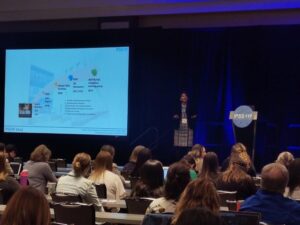
IPSSW 2024 Pediatric Simulation Conference Shows The Way
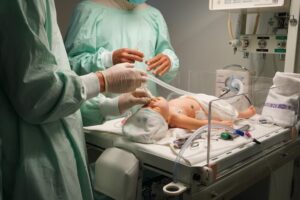
IPSSW Denver Conference Shares Leading Pediatric Simulation Expertise This May 7-9
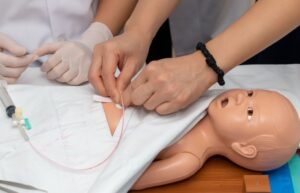
Three Scenarios to Improve Clinical Outcomes with Low Fidelity Pediatric Simulators
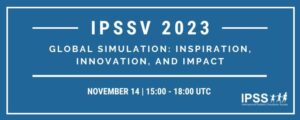
IPSSV 2023: Nov. 14th Virtual Online Symposium for Pediatric Simulation
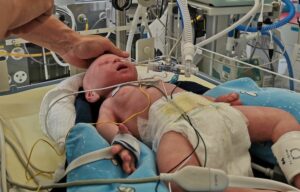
Neonatal Lung Simulator LuSi from neosim Creates Realistic Pediatric Ventilator Training
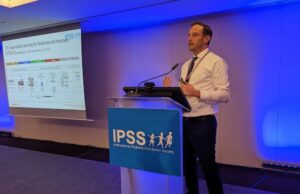
Pediatric Simulation Conference IPSSW 2023 Opens in Lisbon
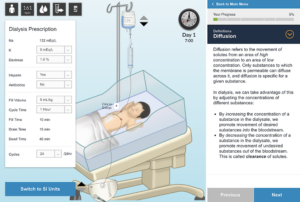
How OPENPediatrics Virtual Simulators Benefit Clinical Simulation Programs
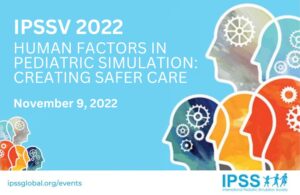
IPSSV2022: Creating Safer Care Through Human Factors in Pediatric Simulation

IPSSV2022: Human Factors in Pediatric Simulation
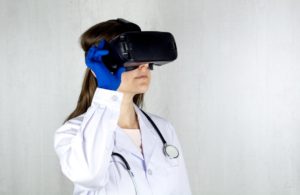
Healthcare Simulation Collaboration Establishes Mixed Reality Neonatal Training
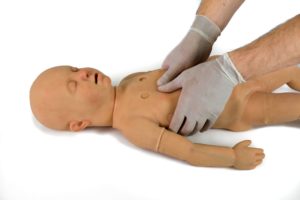
New Lifelike TruCorp TruBaby X Preps Learners for Pediatric Emergencies
Sponsored Content:



